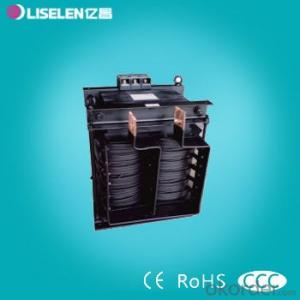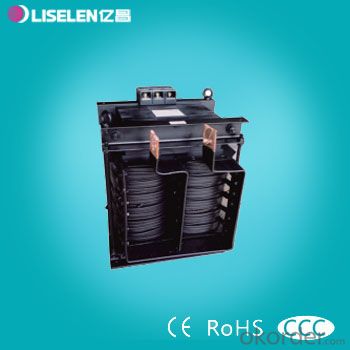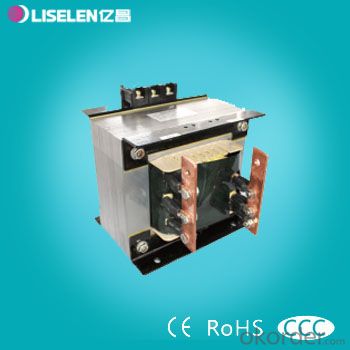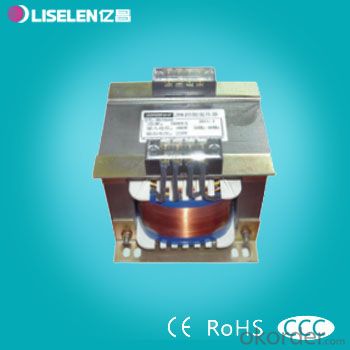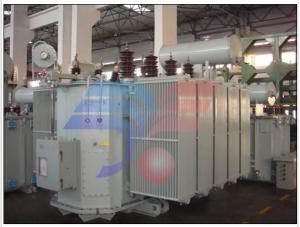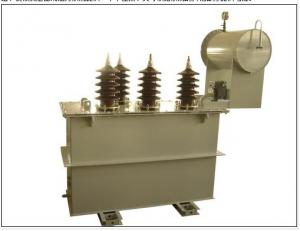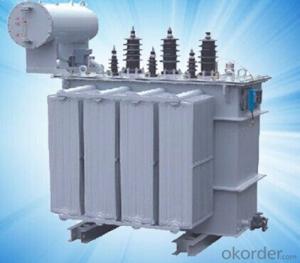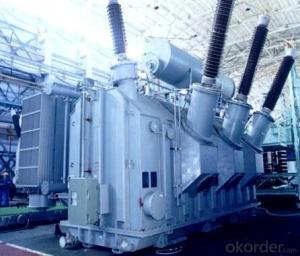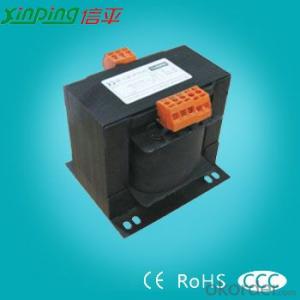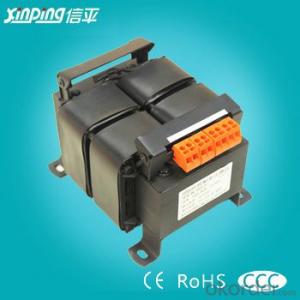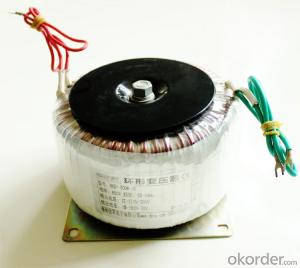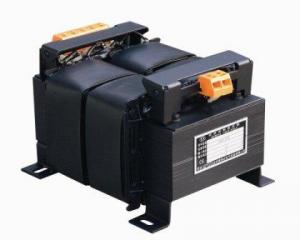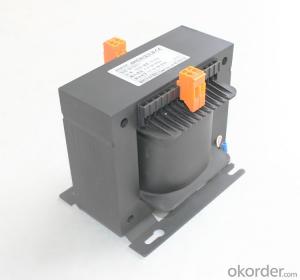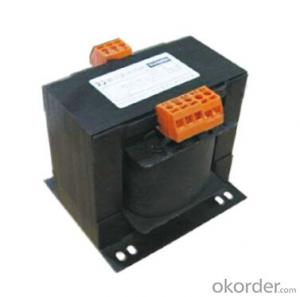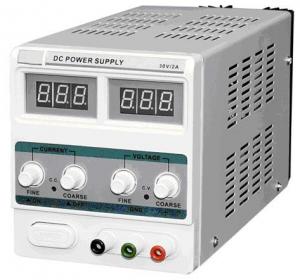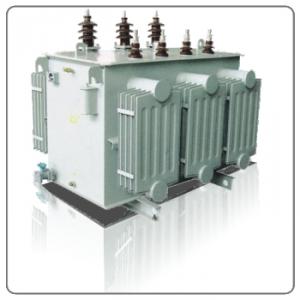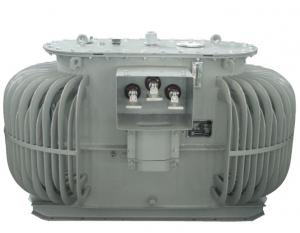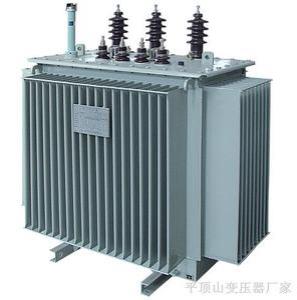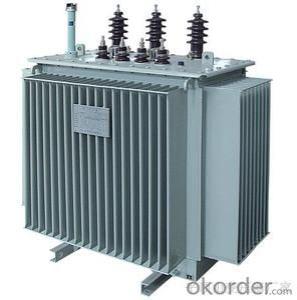BK Transformer Variable Voltage Power supply
- Loading Port:
- Tianjin
- Payment Terms:
- TT OR LC
- Min Order Qty:
- 1 unit
- Supply Capability:
- 500 unit/month
OKorder Service Pledge
OKorder Financial Service
You Might Also Like
Products can be customized according to customer requirements!

Applicable scope: suitable for 50Hz ~ 60Hz AC circuit, widely used in machine tools and mechanical equipment, such as driving, marine, wind power, photovoltaic power generation, testing machine, etc., general electric control power, local lighting and light power supply.

With good performance, reliable operation, low energy consumption, small size, wiring safety, applicability, etc., can work under the rated load, is a kind of ideal variable power supply.

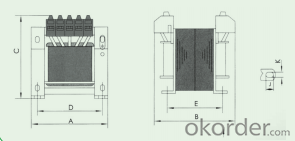

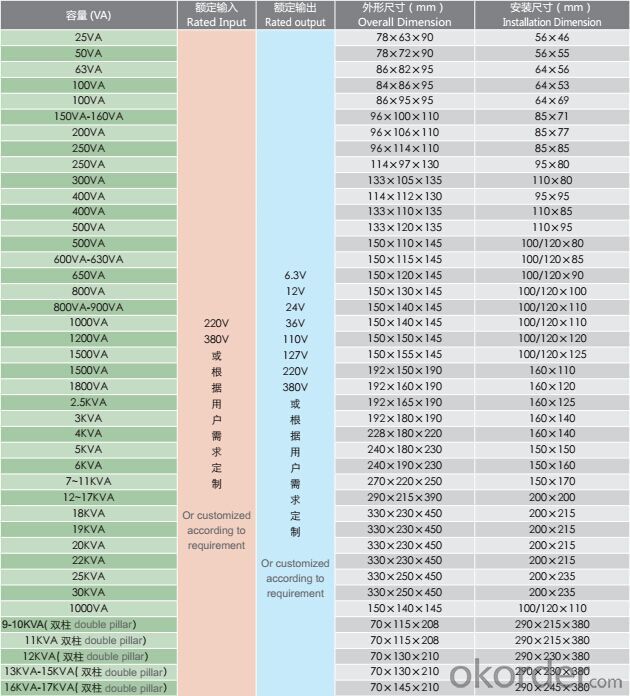


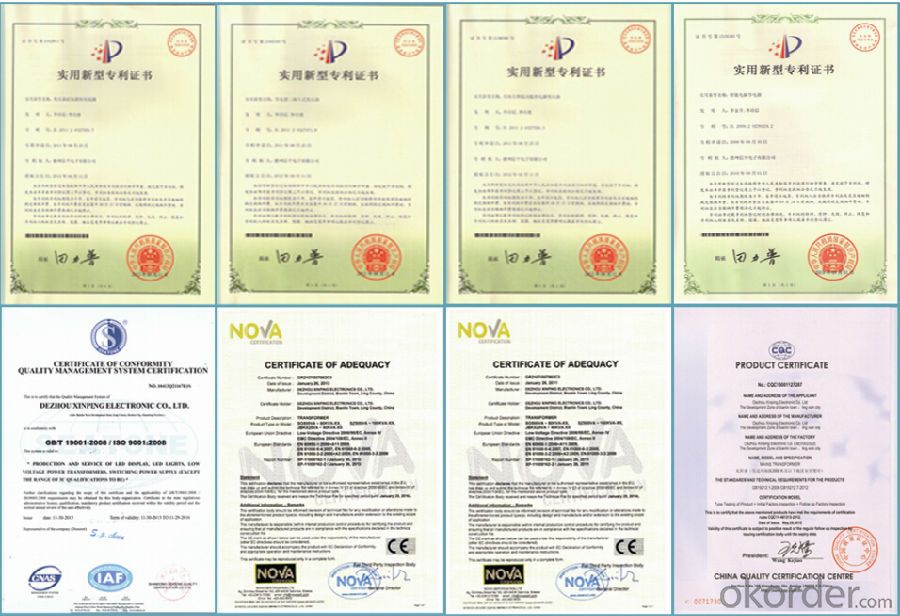

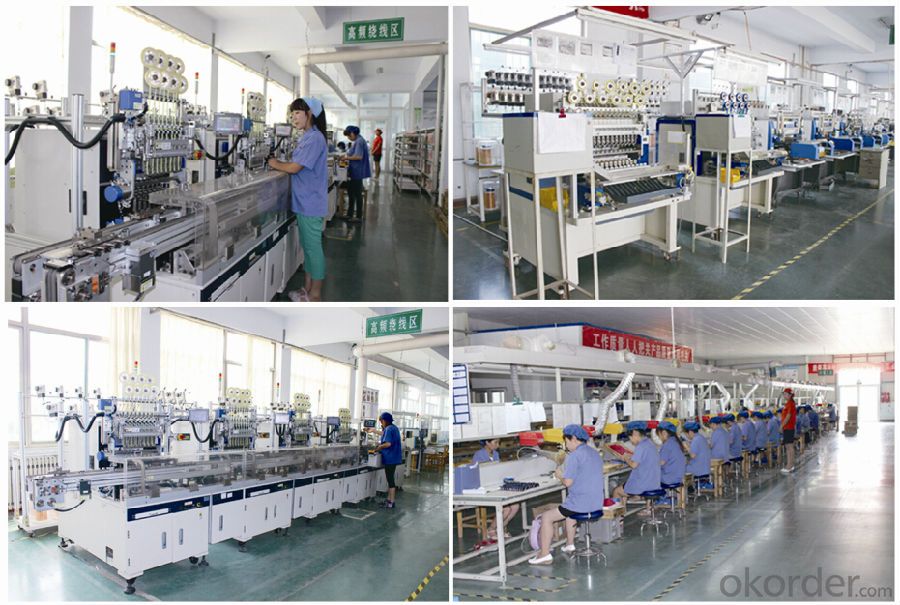
Company have 21 years of business history, set research and development, production and sales as one of professional transformer manufacturing enterprises, also is transformer industry of Shandong Province CQC certification (the original Great Wall certification system, certification time longest enterprises (14 years), mainly produce and sell all kinds of transformer products, including: (transformer Division) three-phase dry type transformer, intelligent three-phase servo transformers, BK\JBK1\JBK3\JBK5 control transformer, toroidal transformer, (small transformer Division) pin, potting type, lead type power transformer series products. (high-frequency transformer Division) EE series, EFD series, PQ series, filter, I-inductor, loop inductance etc..
We are able to supply various types of terminal blocks according to clients' requirement,Please contact us so we can offer you the best quality,competitive price and timely delivery.
- Q: 800KVA transformer itself is the loss of how much?
- Are 800kVA transformer, the model is different, loss of access great. You find out the model to say, there are standards can be found.
- Q: 800kw motor how much transformer
- 800kw motor can generally choose 0.8 motor power in about 800KW with 1000KVA. Motor power in 1400KW or so with 1750KVA. If you are equipped with reactive power compensation (in general, the power company also requires you to match, if the power factor is less than 0.9 Is to be fine) Transformer can also choose a little smaller, like 1000KVA transformer power factor of 0.9 when you can take 900KW load. Can also be based on
- Q: I remember a Transformers cartoon and there was like a gas in it and if the Autobots were in a place that the gas was in there, they would turn red and turn evil and fight each other. And also Optimus Prime was dead fist and then some Autobots bring him back to life And I think Rodimus has the matrix. What was that movie called?
- Actually no. No knowledge of the TV series should affect you watching the movie. The story of the Autobots and the Decepticons is clearly explained in the movie. It doesn't matter is you've seen the TV shows or not. This movie is for everyone. Not everyone because there are some inappropriate terms used that you would usually hear in a high school. There is also one scene where a mother asks her son if he has been mas*****ting. It's not really a kids movie. But, despite that one scene, it's one of the best movies I've seen this summer and once again, no, you don't need to watch the TV series.
- Q: does anywon kno if michael bay will bring back any robots that died from his previous movies? like jazz or bonecrusher or brawl anything like that. and i know that their making transformers 3 but does anyone know whats its going to be called or what are some new transformers? thank u for all ur answers. exept the crappy wons. il just delet thos. even tho u cant. ???
- Okay let me start off by saying i'm not a nerd i just love transformers. lol. But from what I've heard the title is Transformers: Ascendents of Cybertron. The main villian is Shockwave. Megatron, Starscream and Soundwave are the only three that have been confirmed to be in the third one as of now. For the autobots Optimus, Bumblebee, Ironhide, Ratchet, Sideswipe, and the twins who Bay said weren't coming back are coming back. New characters for autobots include a robot named Silverbolt a red ferrari, a purple car, a blue car, and an autobot scientist. Also there introducing a new team of robots that will work with the autobots called the Wreckers, three nascars. There will also be two robot assasins ( decepticons ). And as for any returning unknown but i can tell you this they have comics that take place in between the movies and there coming out with a comic series called Transformers: Nefari or something like that which takes place after the second film and somehow Ravage the dog like decepticon who was killed by Bumblebee somehow comes back to life and Alice that robot chick from college somehow comes back and was captured by sideswipe after stealing an RV and was taking to NEST for tests. Oh and one more thing. The film is supposed to start of during the days where John F. Kennedy was president and something with a decepticon on the moon happens. But the film supposely says that the decepticons had something to do with the cold war and World War II. Hoped this helps
- Q: i am recently watching transformers prime and i am a big fan of all transformers but now i am confused.i generation 1 and 2 was good then they ended.does transformers cybortron trilogy a sequel to g2 or new start and then is tranformers prime a sequel to transformers fall of cybortrons?
- 1) In the G1 timeline we have a sequel series made exclusively for Japanese audiences. They completely ignore the events in the American ending and go in a completely different direction. 1) Transformers: Headmasters 2) Transformers: Super-God Masterforce 3) Transformers: Victory 4) Transformers: Zone Then there's Beast Wars and Beast Machines is a sequel/prequel to the G1 series. ___________________________ 2) Transformers: Robots in Disguise (RiD) aka Transfomers: Car Robots in Japan is a complete standalone series, no relation to any other existing TF series ____________________________ 3) The Unicron Trilogy is it's own timeline that has 3 series. US - JP Armada - Micron Legend Energon - Superlink Cybertron - Galaxy Force but the 3rd series, Cybertron, was originally a self-contained series, the American version edits the dialogue to make it appear as a sequel to Armada and Energon. Also, the character Override, who is female in the US version, is male in the Japanese. In other words in Japan the first 2 are in the same continuity and the 3rd is a another reboot.
- Q: 1. Which type of connection would be the best to use at the beginning of a power transmission line? Which connection would be the best to use at the end of a power transmission line? Explain.2. In wye delta and wye wye transformation, what line voltage should be applied in order to have all transformer windings operating at their rated voltage?3, how do you calculate the percentage of the line voltages?
- 1. unsure you would need to read up on that there are plenty of books on power distribution I get the feeling an explaination wouldnt help you without a bit of research first 2. power transformers are manufactured to a certain specification eg 11,000 in 415V out, the output voltage is dependant on the ratio of windings 3. if the turns ration is 1:100 ie if the primary winding has 1 turn and the secondary winding has 100 turns then the voltage on the secondary will be 100 times that of the primary. (not sure if i have answered your question but i tried!)
- Q: I understand US voltage appliances use 2 x 110v hot leads to make 220v @ 60 Hz. The voltage in China is 220v @ 50 Hz. Would I have to get 2 step down transformers to make 2 x 110v hot leads? I found transformers making 220v @ 50 Hz to 110v @ 60 Hz, but only one lead. How can I make it work over there? I understand there are ranges at 220v made specifically for Europe and China at 220v, but I love this range. I want to use this range made for the US in China. What would be the way to do this? Any help would be grreatly appreciated!
- I appreciate your notion of taking a U.S. product and using it in China. Makes me warm all over with irony. If you don't have an answer here, try posting in the Engineering section. Good luck.
- Q: Hello everyoneA 240-110 stepdown transformer is used with quite a lot of equipement in my home and I have recently become a bit concerned about the effects that they have on the equipement.Thanks to some web page I stumbled across saying that transformers can 'overheat' your equipement etc.And since most transformers aren't made by any big name brands, there really isn't a way to tell if the one in posession is a 'high quality' one or not.So my question is, do transformers actually damage your equipement?Anyone have expertise in this area?Thank you very much.
- All transformers do is change voltage. As long as the equipment you are using is rated for the output voltage of the transformer, there shouldn't be any problems. There is a small possibility that you might get a little bit of humming and line noise from the transformer's windings, and if you're concerned about that, such as with audio equipment or computers, you can use a line conditioner to filter out the noise. I'm not sure what kind of equipment you mean. If you mean equipment that uses large motors or other inductance devices with a low power factor, I have heard that it can cause buckingbut really this is more of a danger to the transformer than the equipment. So, basicallyNO, a transformer isn't going to cause any damage to equipment as long as it's rated for the output voltage of the transformer.
- Q: A topic that: a three-phase transformer wiring is YN, Y, a0, d11, all mean what? Three-phase transformer how four ways to connect it?
- If the three-phase transformer has four windings can not have four kinds of wiring way?
- Q: a house's two furnaces are not working. the pilot lights are on. The lady's brother said there is no voltage at the thermostat. where does the 24 v come from? a transformer ? where?
- should be on the furnace. however the pilot light doesn't need the voltage to light. the solenoid does need the voltage to open.
Send your message to us
BK Transformer Variable Voltage Power supply
- Loading Port:
- Tianjin
- Payment Terms:
- TT OR LC
- Min Order Qty:
- 1 unit
- Supply Capability:
- 500 unit/month
OKorder Service Pledge
OKorder Financial Service
Similar products
Hot products
Hot Searches
Related keywords
